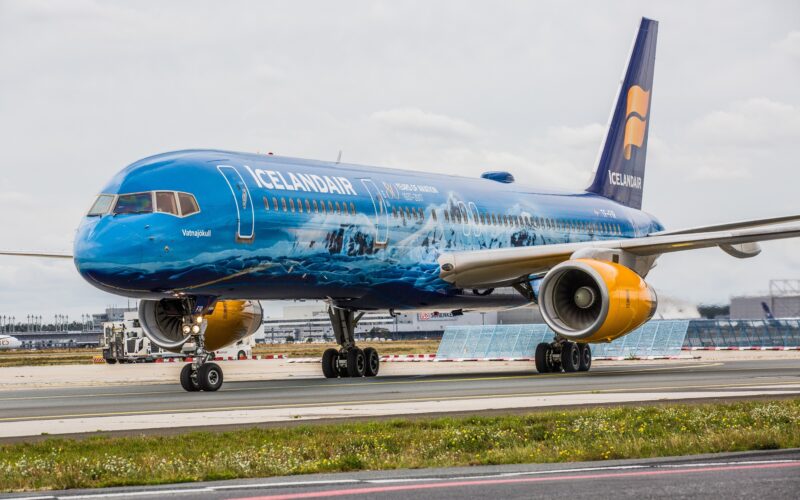Icelandair has announced that it has signed a Memorandum of Understanding (MoU) with Airbus for 13 A321XLR aircraft, also placing 12 further options, as the flag carrier of Iceland looks to replace its aging Boeing 757s.
The airline and manufacturer signed the MoU on April 7, 2023, as the Icelandic carrier placed an order for a total of 25 aircraft, 13 firm and 12 options. Icelandair is also currently “in advanced stage of negotiations” to lease four Airbus A321LR aircraft in order to operate them from 2025.
If the MoU is finalized, Icelandair would start taking deliveries of the A321XLRs in 2029. An option for further additional A321LRs is also on the table, according to the airline’s announcement.
“With the acquisition of the Airbus aircraft, Icelandair will complete the replacement of the Boeing 757,” noted Icelandair. “The agreed purchase price of the 13 aircraft is confidential. The financing of the aircraft is yet to be determined but the Company will explore financing options closer to the delivery dates,” the carrier’s statement continued.
While Icelandair will continue being an all-Boeing operator until 2025, with the planned arrival of the first A321LR the carrier will become a mixed-fleet operator. According to ch-aviation.com data, it currently has 46 aircraft in its fleet, including 16 Boeing 737 MAX, 16 757-200, two 757-300, and three 767-300ER aircraft. In terms of freighters, the Icelandic airline operates a pair of 757-200Fs, including one converted freighter, as well as two converted 767-300Fs.
Its regional fleet consists of five De Havilland Canada DHC-8 aircraft, namely three Q200s and two Q400s.
Previously, the only jets it operated other than Boeing aircraft were the McDonnell Douglas DC-8s, with Icelandair carrying passengers with the four-engine jets until 1990.
Deciding on Icelandair‘s future fleet
Having an all-Boeing fleet made pilot training and acquisition less of a strain on the company’s resources, especially with the Boeing 757 and 767 sharing a common type rating. However, the aging fleet, coupled with Boeing’s decision not to compete with the A321LR and A321XLR, put the airline in a quandary.
“We are happy to announce that we have now reached a conclusion regarding Icelandair’s future fleet. We have decided that the capable and fuel-efficient Airbus aircraft, A321XLR and A321LR, will become the successors of the Boeing 757 we are gradually retiring,” commented Bogi Nils Bogason, the Chief Executive Officer (CEO) of Icelandair. Currently, the passenger version of Boeing 757-200 and Boeing 757-300s flown by the airline are, on average, 25.3 and 22.2 years old respectively, according to ch-aviation.com data.
Previously, in an Executive Spotlight interview with AeroTime, Bogason said that the company was exploring two options – either to add more 737 MAXs or else go with Airbus’ A321LR and A321XLR as replacements for the Boeing 757.
While the three 767s are, on average, 23.8 years old, “replacement of the wide-body fleet is not a concern at this point in time,” the CEO stated during the interview.
Introducing a new fleet type will come with various operational complexities, including the training and certification of crews and other personnel. However, since Boeing has decided to discontinue a mid-market airplane, previously dubbed the New Midsize Airplane (NMA), Airbus has had full control of that market. The A321LR was first delivered to Arkia – Israeli Airlines in November 2018, while the European manufacturer plans to introduce the A321XLR in 2024.
A321LR has a maximum range of up to 4,000 nautical miles (7,400 kilometers), while the A321XLR flies up to 4,700 nm (8,700 km). Meanwhile, the Boeing 737 MAX-7 has the longest range of the four aircraft in the family (3,850 nm, 7,130 KM), but has the fewest possible seats with 172. The Boeing 737 MAX-10 can seat up to 230 passengers and fly distances up to 3,300 nm (6,110 km) if equipped with a single auxiliary tank.

